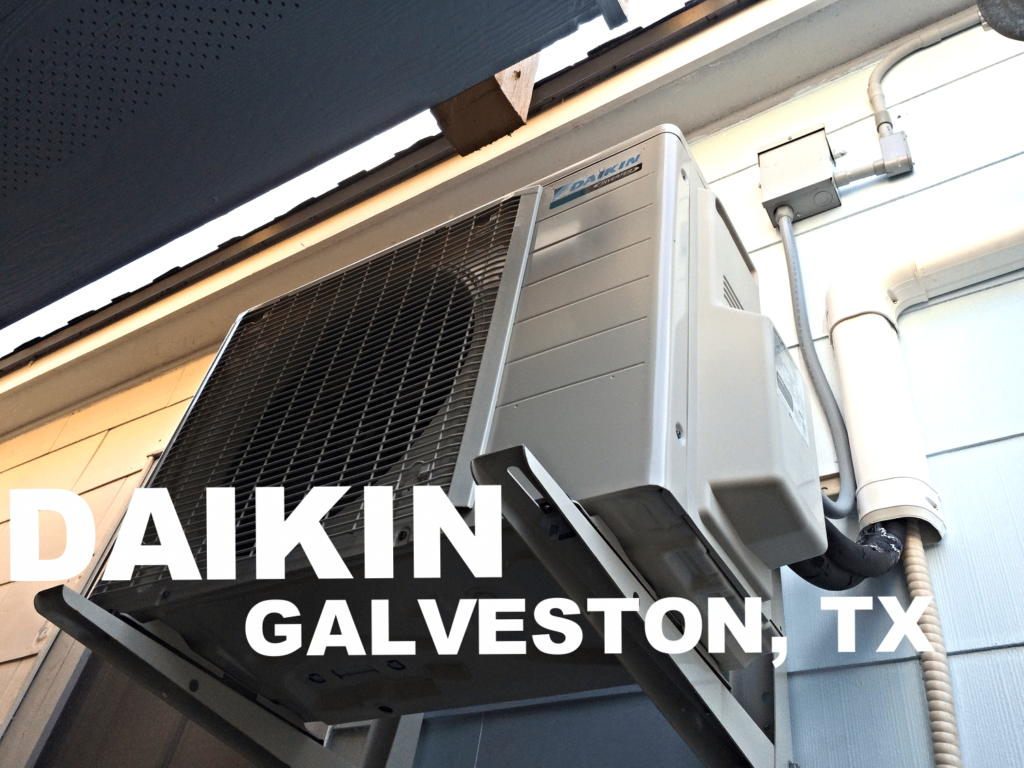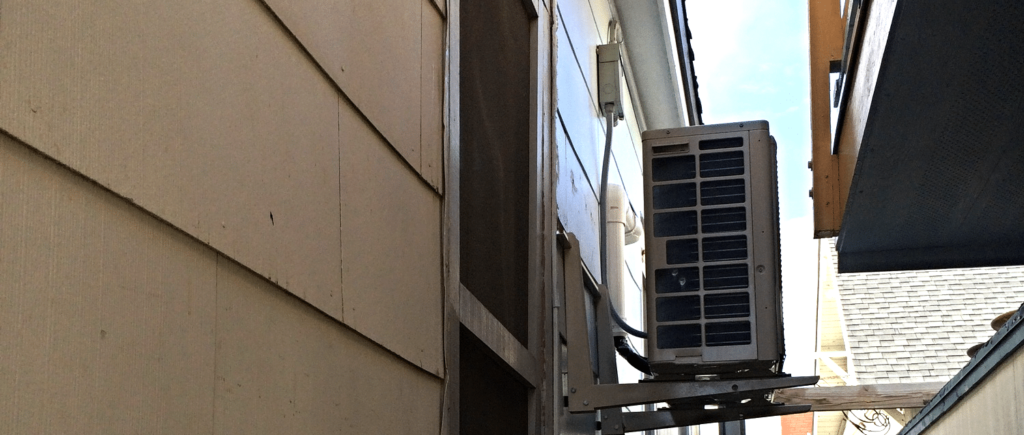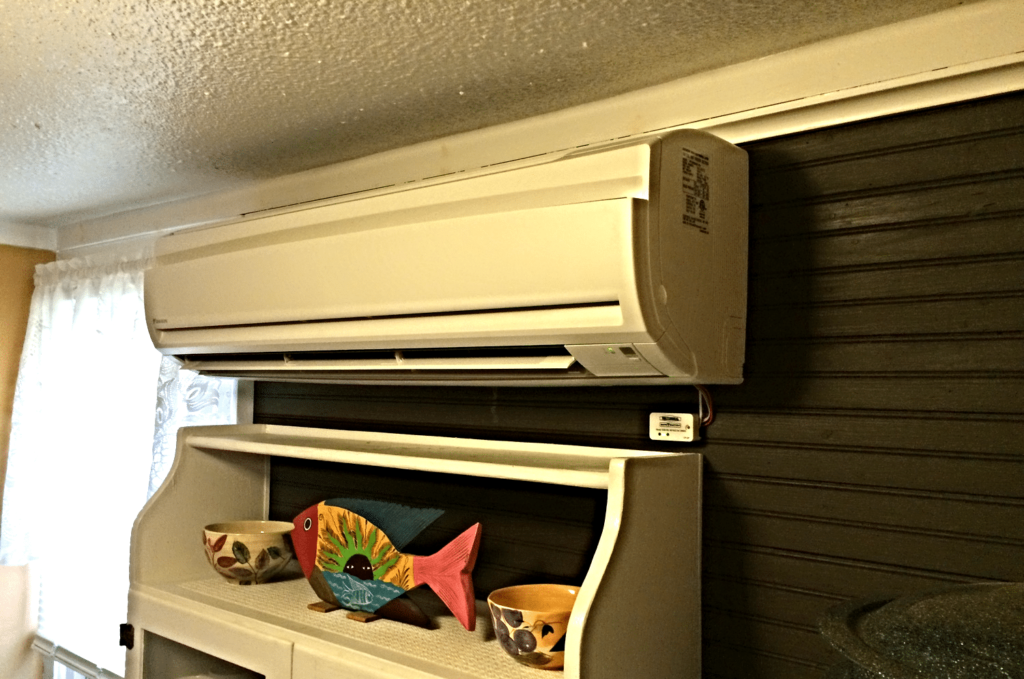
Mission AC recently installed several different mini-split options on this property, all Daikin. Two systems were one-to-one (one inside and one outside unit), while the third system was a multi-port (multi-zone) system. This means that three indoor air handlers were installed with one outdoor condensing unit.
How is this better than central AC?
It sounds complicated compared to central cooling, but both of these ductless options are much more efficient than your average central air system, operating at 20 SEER. They were installed in this case, not just for their low energy usage, but also because they work extremely well in older homes. Many older historic homes do not have proper room air distribution through ducts. Mini-splits work around this common issue easily, allowing for previously unconditioned spaces to be comfortable.
The Installation
This particular installation has a few features worth noting:
The Mounting Bracket
The outdoor HVAC condensing unit is about five feet off of the ground, set on a 300-pound limit bracket. We did this for several reasons, the most important of these being flooding. Galveston has had its fair share of devastating hurricanes throughout the years, and keeping this unit off the ground will protect it from flood damage.

A Water Sensor
In the picture below, you’ll see a small white box with an indicator light on the right side of the indoor unit. This is an accessory that prevents water damage inside the home. Further, it’s also a code-required item, but most mini-split providers neglect to add this item to their systems. The benefit of this item is that it will prevent water from entering the living space, protecting both the system and your home from damage.
HVAC systems naturally condensate by removing moisture from the air that it uses. This is normal and is typically not a problem, as it gets drained out of the house. Occasionally, the draining system will fail, causing the water to back up and enter the house. With one of these devices, this can be avoided.

Size
The total living space on this install was only 550 square feet. Typically, you’d expect a two-ton (24k BTU system) system to be overkill on a home this size. However, after doing a thorough investigation and performing a Manual J heat load calculation, it was determined that this size of system would be necessary to properly heat and cool the living space. Without performing the proper heat load calculation, the incorrect unit would have been chosen and the customer would have been unhappy with the performance of their new system.
If you have questions about ductless systems for your home or need repairs on your current system, contact Mission AC & Plumbing today.



